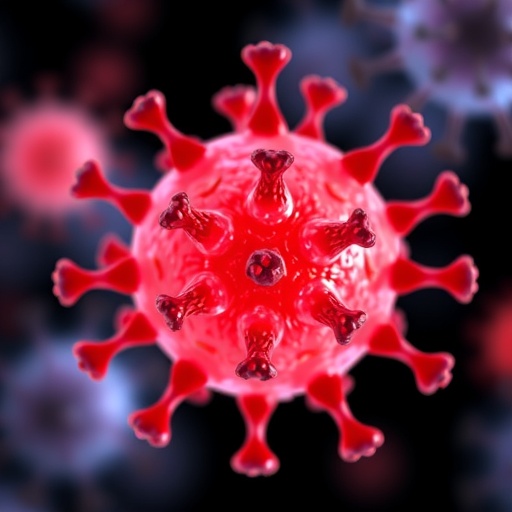Diabetes mellitus is a significant and growing health problem which contributes significantly to the prevalence of chronic kidney disease (CKD). According to the ERA-EDTA Registry, nearly a quarter (23%) of all patients who started renal replacement therapy in 2016 were patients with diabetes. The underlying idea of the study, which has been presented as a late breaking clinical trial at the ERA-EDTA congress in Budapest today, was to assess the potential of the DPP-4 inhibitor linagliptin (LINA), an oral diabetes drug, to reduce the burden of CKD and cardiac complications as secondary diseases in people with diabetes. Only a few weeks ago it had been shown that SGLT2 inhibitors, another class of diabetes drugs, could slow CKD progression in this patient group.
Dipeptidyl peptidase-4 (DPP-4) inhibitors are usually prescribed for patients with type 2 diabetes as second or third line drugs, when there is not sufficient treatment response to more widely used drugs like metformin. DPP-4 inhibitors block the enzyme DPP-4, which destroys incretins. Incretins stimulate the production of insulin and, thus, the blood sugar level decreases with the medication.
“But do DPP-4 inhibitors have any beneficial renal and cardiovascular effects? Can they prevent these secondary diseases of diabetes? This is what we wanted to find out in our trial,” explains lead investigator Professor Dr Christoph Wanner. The multicenter, randomized, double-blind CARMELINA trial compared LINA 5 mg vs placebo, added to standard of care, in people with type 2 diabetes and CV and/or kidney disease. The study assessed the cardio-renal disease burden and effects of the medication on CV, eGFR and albuminuria outcomes in participants with or without nephrotic-range proteinuria (defined as UACR ?2200 mg/g at baseline).
It showed that 646 of the 6979 randomized participants had nephrotic-range proteinuria and, thus, suffered from renal disease. They were at high risk of CV events and had poor kidney outcomes; a 3-fold greater decline in eGFR was seen in those with nephrotic-range proteinuria at baseline
The difference in HbA1c over the full trial duration favoured LINA (-0.36%). This did not differ between patients who had nephrotic-range proteinuria at baseline and those who had not. A larger proportion of patients who had received LINA vs placebo regressed to normoalbuminuria or had a reduction of urine albumin-to-creatinine ratio of ?50% from baseline – regardless of nephrotic-range proteinuria status. However, loss in eGFR over time was not different between the groups (-6.51/year vs placebo -7.07/year), and the medication did not affect the risk for so called 3-point major adverse cardiovascular events (HR.1.02 [95% CI, 0.89, 1.17]), CV mortality (0.96 [0.81, 1.14]), or all-cause hospitalization (0.93 [0.85, 1.00]), in people with or without nephrotic-range proteinuria
“Linagliptin is effective in lowering HbA1c and albuminuria, but this did not translate into a better renal and cardiac outcome. It controlled the diabetes and it could halt albuminuria, but it had no additional clinical benefits. But the study clearly showed that there is a group of patients with diabetes who clearly are in need of outcome-enhancing therapies, because their prognosis is rather poor. Nephrotic-range proteinuria might be a good marker to stratify these patients. I would advise to treat these patients with SGLT2 inhibitors instead, or a combination of SGLT2 inhibitor and DPP-4 inhibitor. Apart from diabetes control, SGLT2 inhibitors have shown to be effective in renal and cardiovascular risk reduction [2]”, concluded lead investigator Professor Wanner.
###
[1] Wanner C et al. Effects on kidney outcomes in patients with nephrotic range proteinuria: Insights from CARMELINA. LBCT Abstract ERA-EDTA Congress 2019, Budapest
[2] Perkovic V et al. Canagliflozin and Renal Outcomes in Type 2 Diabetes and Nephropathy. New England Journal 2019; 15 Apr. [epub ahead of print]; DOI: 10.1056/NEJMoa1811744
About ERA-EDTA
With more than 7,000 active members, the ERA-EDTA is one of the biggest nephrology associations worldwide leading European nephrology and one of the most important European Medical Associations. It organises annual congresses and a Scientific Education Interactive Day (SEID), it produces guidelines, it collects data and performs epidemiological studies through its Registry. It supports fellowships and research projects. Its publications are NDT and CKJ (this last journal is Open Access). The ERA-EDTA also has an online Educational platform: the European Nephrology Portal (ENP) which includes NDT-Educational@ENP. The 2020 Congress will be held June 6-9 in Milan (Italy). Visit the booth to receive more information!
Web site: http://www.
Media Contact
Bettina Albers
[email protected]




